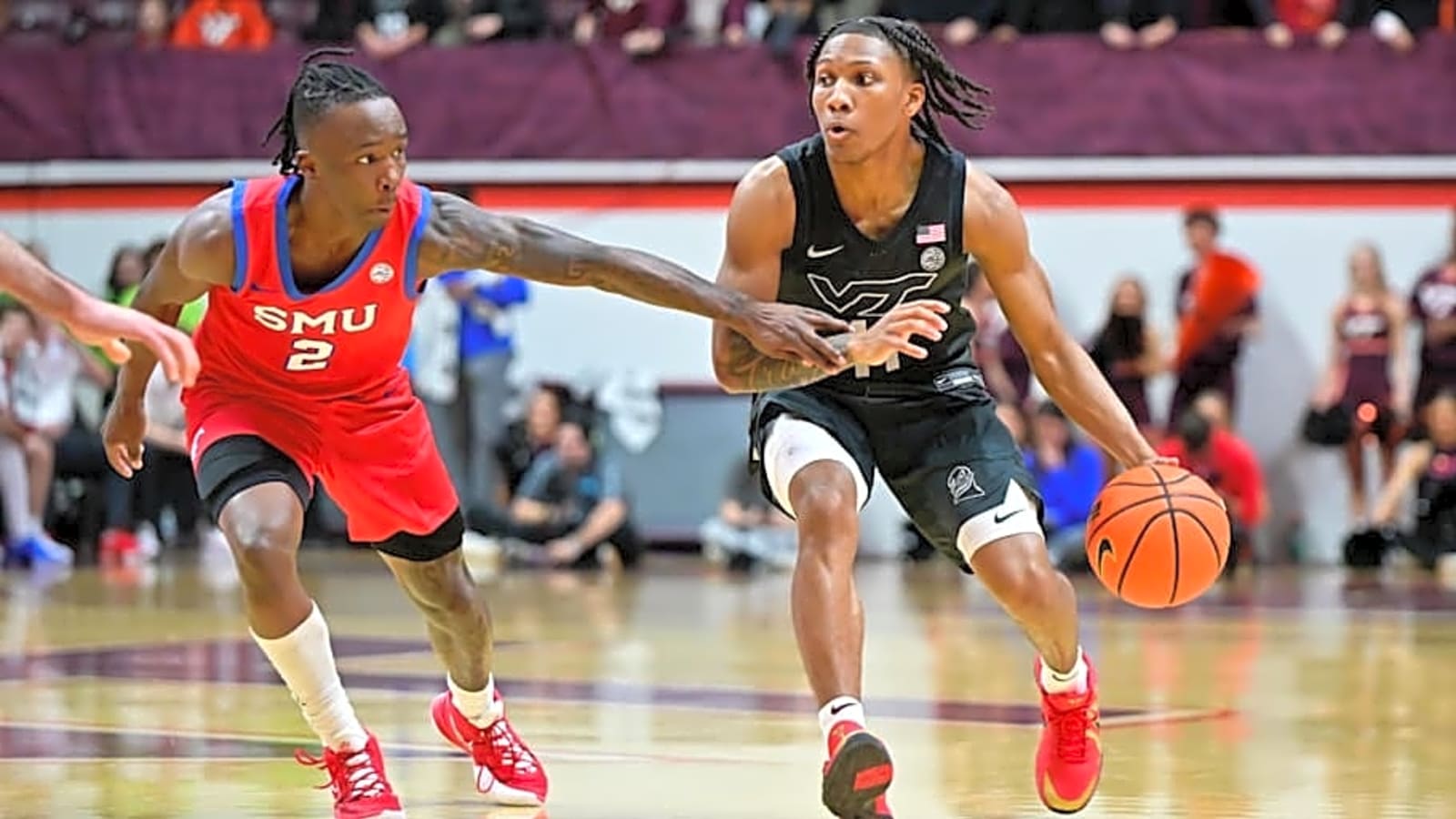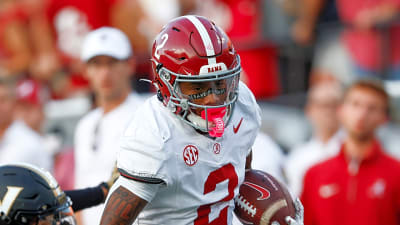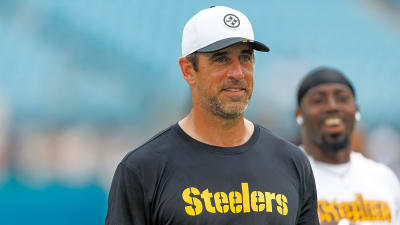
There's still two and a half months to go until men's basketball kicks off for Virginia Tech, but one pressing question: how does the depth chart look for the Hokies? What are some loose odds and ends that need to be tied up before the meat of conference play? The roster has undergone another round of reshaping under head coach Mike Young, with size added through both the transfer portal and high school recruiting. That makes the picture a little more complicated — and a lot more intriguing — heading into the fall. Here's a look at each position group.
catch JB on the break pic.twitter.com/jNsxQY0kpN
— Virginia Tech Men's Basketball (@HokiesMBB) August 13, 2025
Guards
To start off, Young mentioned in a media availability session held back in July that there were two ongoing position battles: Ben Hammond against Izaiah Pasha at the point guard slot, and Jailen Bedford versus Jaden Schutt at the two. Beyond that, there's Tyler Johnson, who could slot in at the two or the three, and true freshmen Brett Freeman and Shamarius "Snook" Peterkin. Peterkin also intends to play football. Both Freeman and Peterkin will presumably redshirt; the addition of wing Neoklis Avdalas to the fold means that six guards will be vying for real minutes on the floor.
Last year, the Hokies frequently leaned on three-guard, two-forward combinations. That formula, however, appears less likely this year. With Young having added more size through both the transfer portal and a strong incoming freshman class, the odds of regularly deploying three-guard looks have diminished. If such a lineup surfaces, it may be in a “small-ball” configuration designed to maximize pace and shot-making rather than to anchor the rotation.
That leads to the next question: how much positional distinction will there really be in the backcourt? Will Young roll with a true point guard and shooting guard pairing alongside a third perimeter player, or will it function more as a hybrid three-guard unit flanking a forward and a center? Much of that depends on the way he organizes the frontcourt rotation.
The backcourt and frontcourt are cyclical pieces of the same puzzle; the number of guards Young plays depends directly on how the frontcourt rotation shakes out.
Forwards
One of the main questions to note: how much does Avdalas truly play at the one? Young mentioned during media availability that Avdalas will spend time at point, but the level of that role isn't set in (Hokie) stone. Does he settle in more naturally at the two or at the three?
My early projection for the starting five looks something like this: Pasha/Avdalas/Schutt/Lawal/Hansberry. That alignment leaves at least one of last year’s four returners out of the starting group, likely two if Pasha wins the point guard battle over Hammond.
If Avdalas locks down the one, it frees Pasha to slide off-ball to the two, but there remains a numbers crunch with Schutt and fellow guard Tyler Johnson both in the mix for wing minutes; however, there’s still a pathway for each to contribute meaningful minutes off the bench and the other to start.
At the four, Lawal feels like a lock to start, while I think that Amani Hansberry projects as the center despite having played more of a stretch-four role at West Virginia. Further down the rotation, Sin’Cere Jones appears to be more of a long-term piece. This season will likely be developmental for him, but by the 2026-27 campaign, he could be a starting-caliber option at either the three or the four.
Centers
Although Hansberry has the length and build to hold down the middle, his game has traditionally been closer to that of a stretch four rather than a shot-blocking center. During his time at West Virginia, he mostly logged minutes at power forward. True freshman Christian Gurdak, meanwhile, profiles more as a classic interior presence. Gurdak’s size and willingness to battle on the glass give him the makings of a traditional big, the sort of anchor who thrives around the rim.
If Hansberry plays as more of a stretch option, Tech can afford to keep three guards on the floor without sacrificing spacing. If Gurdak forces his way into a major role, however, Young may lean into a more conventional two-guard look to balance the floor or remain with the three-guard lineup to retain an element of shooting.
Hansberry is more of a natural four, but he brings balance to the lineup, tall enough to defend and rebound without being plodding. He’s not a prototypical shot-blocker, but he can space the floor and provide offense inside. Gurdak, meanwhile, is less mobile and limited as a weak-side defender, though he offers the kind of imposing interior presence that can control the paint.
Given that Lawal departs following this season, barring a redshirt, Hansberry could shift back to the four for the 2026-2027 season if he stays. That opens up an intriguing query: could a battle between Gurdak and German center Antonio Dorn this year determine who earns the starting slot for the 2026-27 campaig n? The outcome of that question likely depends on how Young and his coaching staff approach the transfer portal and the high school ranks over the next 12 months.
Besides Hansberry, Dorn, and Gurdak, there’s Solomon Davis, a late bloomer who will likely redshirt. A very late addition, Davis may not see the court at all this season.
Taken as a whole, Virginia Tech’s roster blends experienced returners with high-upside newcomers, giving Mike Young a far more versatile lineup than last year. The challenge will be how many guards share the floor at once, the question of how Hansberry fits as a stretch big and how quickly the newcomers can adapt to ACC play. The pieces are there, but the next few months will determine whether the Hokies can turn their flexibility into a true identity once conference play arrives.
More Virginia Tech Basketball News:
More must-reads:
- Report reveals how hard Warriors tried to trade for LeBron James
- Big Ten's College Football Playoff expansion idea is 'absurd,' ESPN host says
- The 'Second-leading receiver by NFL team' quiz
Breaking News
Trending News
Customize Your Newsletter
 +
+
Get the latest news and rumors, customized to your favorite sports and teams. Emailed daily. Always free!








